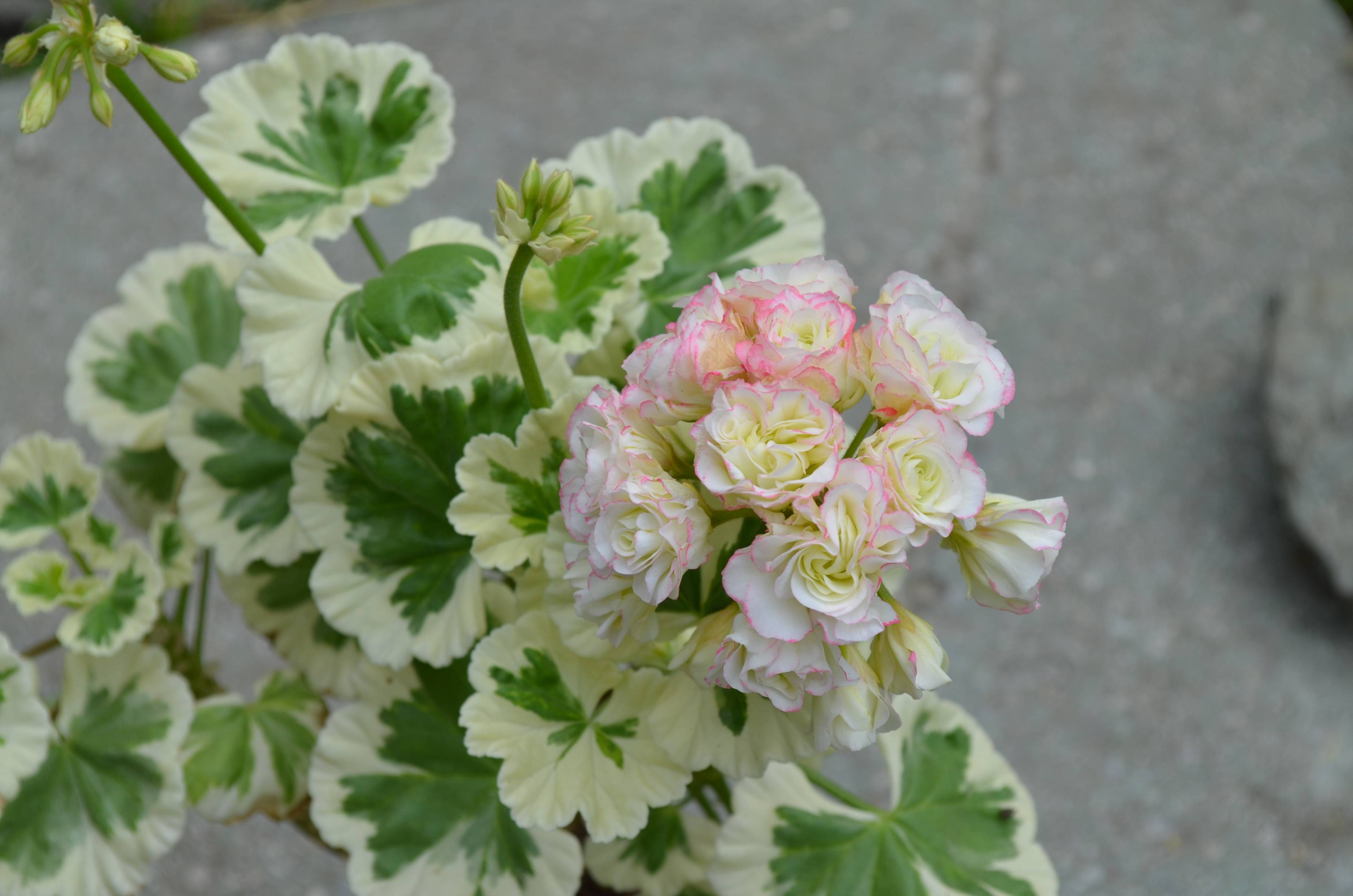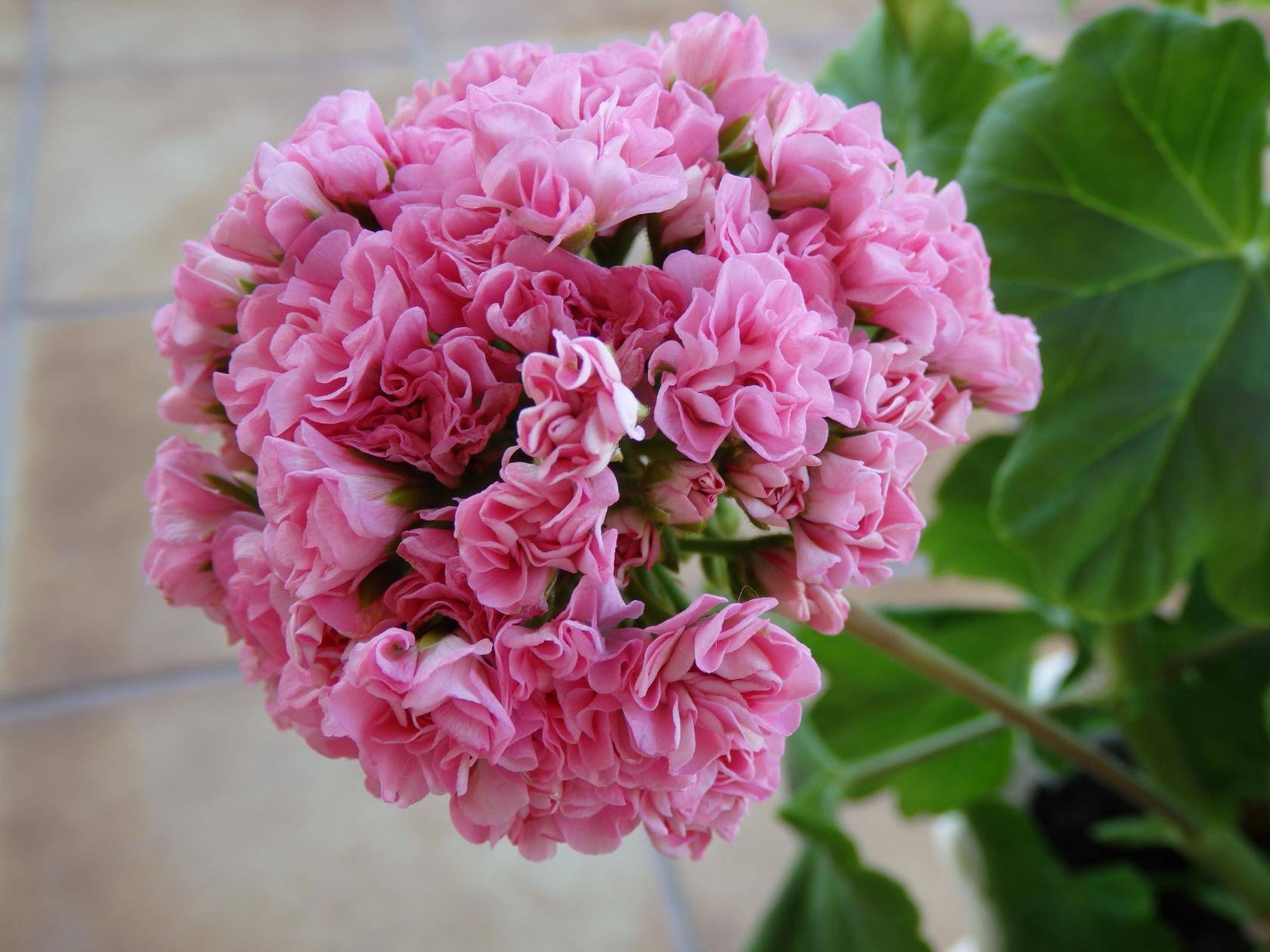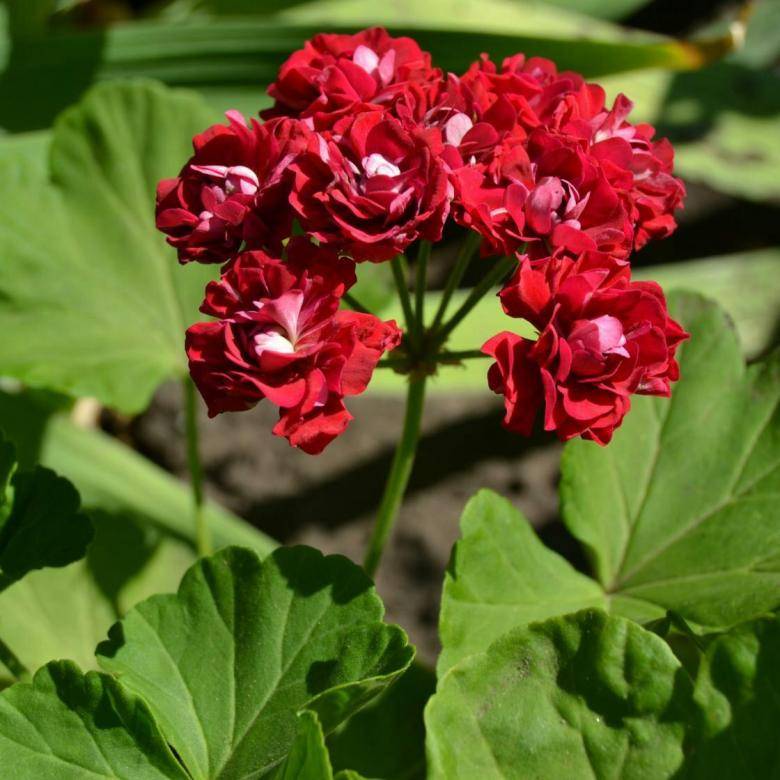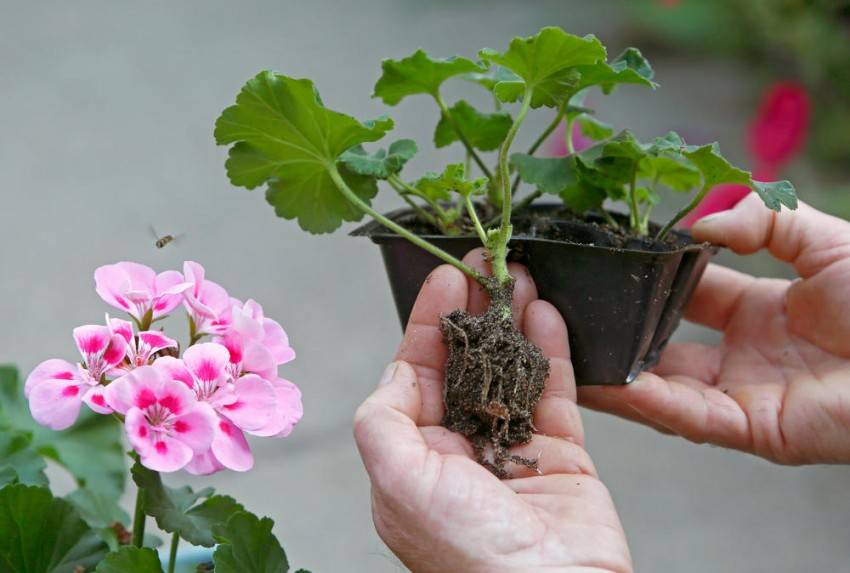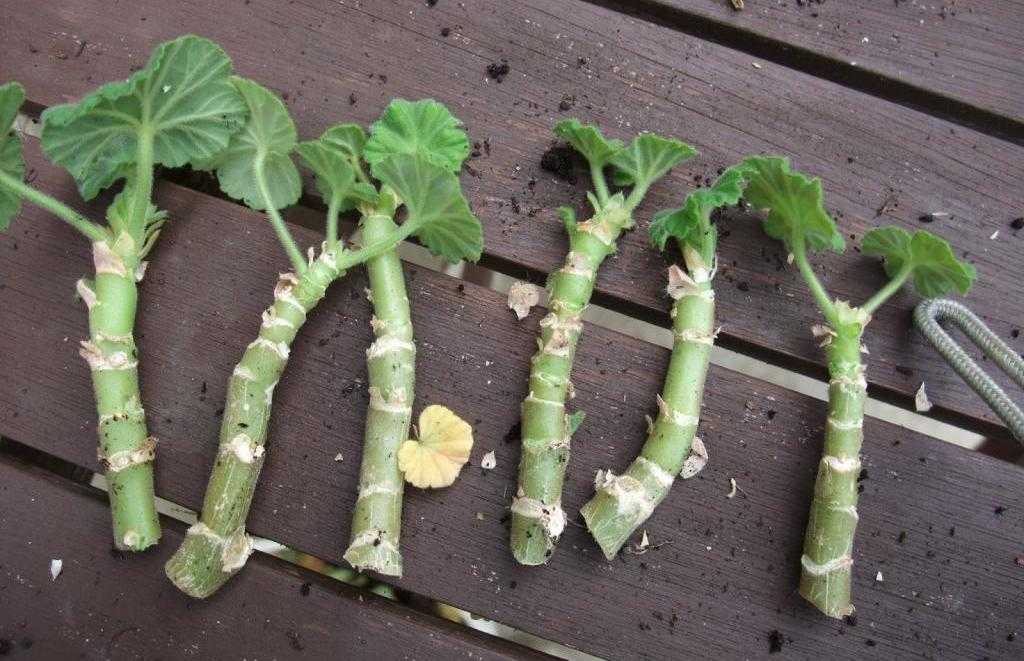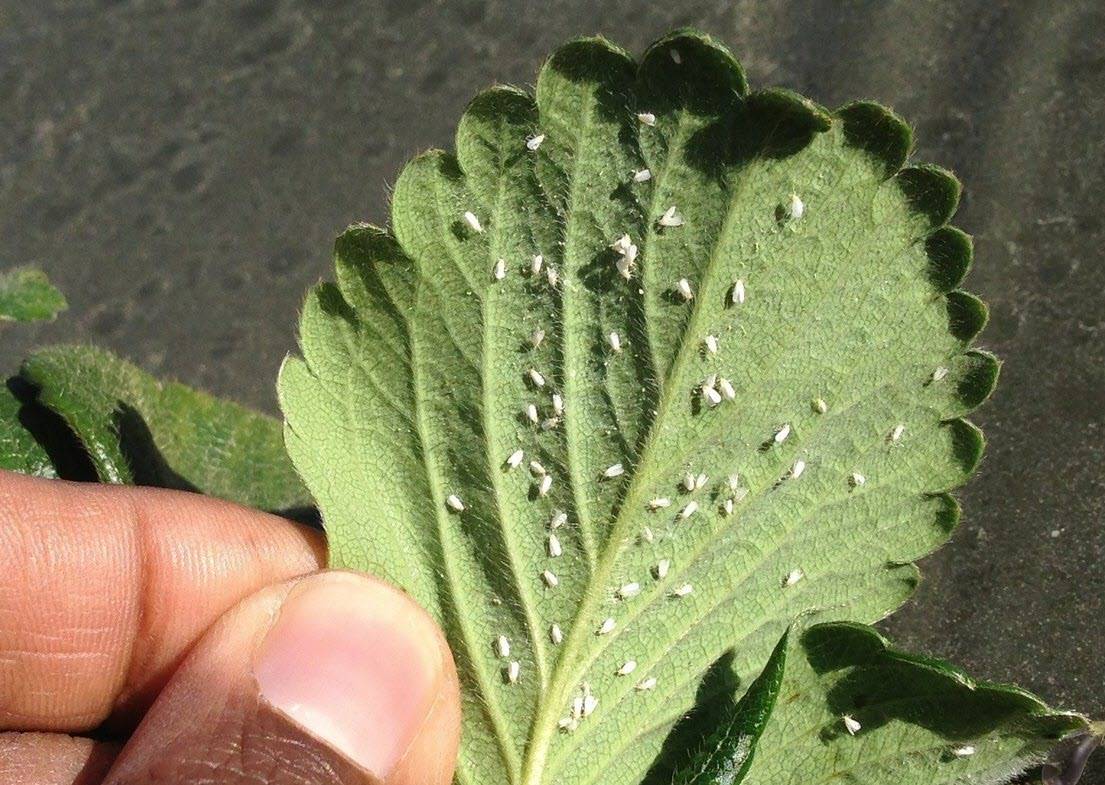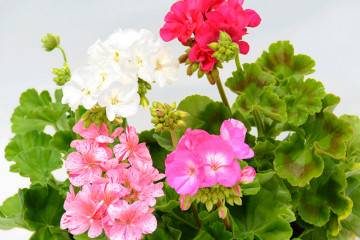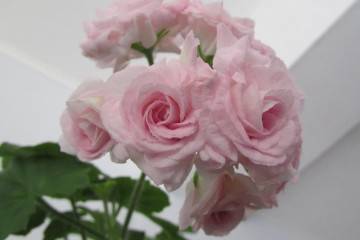Pelargonium rosebud - how to care for geraniums
Content:
The homeland of rosebud pelargonium is the Cape region, which is located in Africa. From there, the colonizers transported the plant first to Europe, and then pelargonium appeared in Russia.
Pelargonium rosebud - what is this flower
Pelargonium belongs to perennial light-loving plants. The flower belongs to the Geraniev family. Rosebuds belong to one of the varieties of zonal terry pelargonium. In appearance, the plant is very similar to terry bush roses.
Pelargonium rosebud is divided into several types, which will be presented below.
Pelargonium groups:
- Ampelnaya.
The ampelous variety is distinguished by the creeping type of stem. The main feature is a cascade of leaves. This variety is mainly planted in hanging pots.
The stems hang down beautifully, which looks very decorative.
- Zonal.
The most hardy type of pelargonium is zonal. It grows to a height of 85 cm. The leaves are fluffy, the dark shade of the leaves turns into a lighter one.
This variety is not intended for outdoor planting. Although zonal pelargonium is a hardy plant, it is rather capricious in its care.
- Dwarf.
The last species is dwarf rosebud pelargonium. Plants are compact. Suitable both for planting at home and in flower beds outside.
Abundant flowering. The bush is small in size but very lush. Not capricious in leaving.
Varieties of indoor plants with names
Description and characteristics of varieties of rosebud pelargonium for growing at home are presented below.
Rose of Amsterdam
Geranium rosebud Rose of Amsterdam belongs to the dwarf varieties.
Terry type inflorescences, white petals. If the flower stands in the sun for a long time, the petals become pinkish.
The age of the plant also affects the shade of the inflorescences. The older it is, the richer the petals are. Growing fast.
Suprem
Pelargonium Supreme is distinguished by its bright crimson inflorescence petals with a red tint. The underside of the petal is white. Stems are erect, thick.
Apple blossom
Apple Blossom got this name because the inflorescences are very similar to the flowers of some apple varieties. The main part of the petal is white-green, the edges are pink.
This variety needs the formation of a bush and regular feeding.
Vectis
The variety belongs to dwarf. Inflorescences of a rich scarlet hue. The blossoming flowers are large, double.
Outwardly, they do not look like most rosebud varieties. Long flowering.
Red (Rosebud Red)
Pelargonium rosebud red is another variety of rosebud pelargonium with red petals.
Terry inflorescences, similar to blossoming flowers of red roses.It is not necessary to form a bush.
Red rosebud pelargonium does not tolerate both heat and cold, so you need to choose a place for it carefully.
Caring for rosebud pelargonium at home
In order for the pink geranium to bloom almost all year round and to be healthy, it needs to provide favorable conditions for growth. Home care for rosebud geranium is not very difficult.
Illumination and temperature conditions
Pelargonium prefers to be in a well-lit place most of the day. But it is not desirable that open sun rays fall on the plants. Due to the bright sun, burns can appear on the foliage, which often leads to the death of the plant.
Dark corners and the north side should be avoided. In such conditions, geraniums will stretch up strongly, the stems will be thin and weak, and you can forget about flowering.
Watering rules and humidity
Pelargonium rosea prefers moderate watering. Due to excessive moisture and stagnant water, the plant suffers greatly.
Thanks to the thick stems in which water accumulates, pelargonium tolerates drought much better. Only warm water should be used for irrigation.
Top dressing and soil quality
The dormant period for pelargonium ends at the end of February. At this time, the plant must be fed with organic and mineral fertilizers. At the end of February, nitrogen is introduced into the soil, which promotes rapid growth.
By the fourth feeding, together with nitrogen, the soil is fertilized with phosphorus and potassium. These substances ensure lush and long-lasting flowering. From organic fertilizers, it is useful to sprinkle the soil with wood ash before watering.
Flower container size
Pelargonium rosebund red and other varieties thrive in medium-sized pots. The choice of container depends on the size of the flower. It is not recommended to plant plants in large containers.
A member of the geranium family will not bloom until the root system fills the entire space in the pot.
The optimum height of the pot is 10-15 cm. The diameter is from 20 to 25. When choosing a container, you also need to proceed from how many plants will grow there. For dwarf varieties, the pot can be taken twice as small in diameter.
Pruning and replanting
Most varieties of geraniums need regular pruning and crown shaping. Young bushes are pinched at those points of growth that are strongly stretched. You can pinch the tops on all large stems.
Mature shrubs are pruned differently. Long stems are cut, leaving 3-4 large buds on each.
The optimal period for transplanting is spring, when the plant is actively growing. For transplanting a flower, it is advisable to use a special soil mixture with humus and coarse sand. The plant is carefully removed from the old pot, being careful not to damage the root system and transplanted into a new soil.
Features of flowering plants
Pelargonium rosebund has a very beautiful flowering.
The dormant period of the plant falls on the end of October - the end of February. At this time, the number of watering is reduced and fertilization is stopped.
The period of activity begins at the end of February, when active sap flow resumes. At this time, the flower needs more watering and regular feeding. The period of activity lasts until October.
The varieties of pelargonium rosebund have double inflorescences.Depending on the variety, the flowers can be either small or very large in diameter.
Flower propagation methods, when it is better to do it
There are two ways of propagation of geraniums - cuttings and seeds.
Propagation by cuttings
Cuttings can be carried out at any time of the year. But cuttings that were cut in the spring take root best of all. It takes about 4 weeks for them to take root.
For reproduction, cut off strong stems with 2-3 leaves and 3-4 internodes. The cut is treated with crushed activated carbon. Then the cutting is removed in the shade for several hours, until the cut winds up.
After this has happened, the cutting is planted in peat or soil. You can put it in water. But such cuttings take root much worse.
Seed propagation
The second way is seed propagation. True, this method is longer. The seeds are planted in a small greenhouse at a distance of 5 cm from each other. As a greenhouse, you can use a large container that is covered with cling film.
The greenhouse is regularly ventilated and the soil is watered. When sprouts appear, the cling film is removed. You can transplant seedlings into separate pots after a pair of full leaves appear on each of them.
Growing problems, diseases and pests
When growing pelargonium, you often have to face various problems that relate to cultivation, pests and diseases.
In order to avoid problems with growing a flower, you need to properly care for it. But, if pests or diseases have already appeared, you cannot hesitate. An urgent need to start treatment.
Of the diseases, pelargonium is affected by:
- Viral infections. The first sign is the appearance of brown spots. The flower must be transplanted into a new clean soil, and the plant itself must be treated with fungicides. Then the foliage is necessarily treated with an aspirin solution (1 tablet per 500 ml of water).
- Drying of flowers usually occurs due to a fungal infection. The flower in this case is sprayed with Bordeaux liquid.
- With gray rot, brown spots appear on the lower part of the leaves. First, the flower is treated with fungicides. Stop applying nitrogenous fertilizers. Reduce the amount of watering. The soil is loosened regularly.
If the plant is healthy, then the likelihood of pests on it is very small. Essential oils repel insects. But if the flower is weakened, aphids and whiteflies can appear on it. From home remedies, spraying with soapy water and a shower helps. You may need to resort to using insecticides.
Pelargonium rosebunda is the real queen among indoor plants. Due to its beautiful flowering and unpretentious care, the plant is so fond of flower growers.
